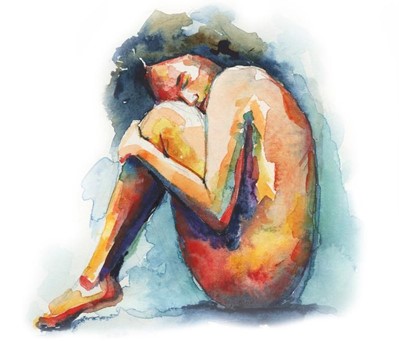Enactivism arose in opposition to the internalist and computational models of the mind, that attempted to reduce experience to mechanisms or representations in the brain (Kiverstein & Rietveld, 2018). According to a more traditionalist cognitive view, the mind processes information by forming a representational mapping or a replicated model of the external world (Parattukudi, 2019; Stilwell & Harman, 2019), whereas enactive theories propose a new set of theoretical assumptions to understand cognition, breaking the tight conceptual connection between cognition and representation (Kiverstein & Rietveld, 2018). In particular, the enactive approach assumes that there is no clear-cut ontological split between the individual and its environment, and that the embodied mind emerges through active engagement with the world (Stilwell & Harman, 2019). For this reason, the “mind” cannot be reduced to simply neural processes and depicted in monist terms, but in embodied ones. For enactivists, the unit of analysis for understandingcognitionis not the neuron, the brain or any otherbodily tissue; it is, instead, the holistic dynamic interplay of the brain-body-environment (Stilwell et al., 2020). Varela and colleagues (1991, p.9) in The Embodied Mind introduce the idea “that cognition is not the representation of a pregiven world by a pregiven mind but is rather the enactment of a world and a mind on the basis of a history of the variety of actions that a being in the world performs”. From this point of view, cognition should be understood as the sense-making activity of an organism in interaction with its environment (de Haan, 2017). It is therefore clear that human psychological functioning and sense of meaning are shaped by bodily experience. Thus, in other words the mind is not a linear symbol-processing machine with a defined input and output, but rather an emergent property of the whole organism arising from interactions in the brain-body-environment system (Nielsen & Ward, 2018).
Over the last few decades, the enactive perspective has gained relevance at both an epistemological and practical level (Krueger, 2019). Implications of the enactive conceptualization of the mind can be observed in health care and, more specifically, in the paradigm shift from what might be called as medical reductionism to medical holism, that is from identifying and reducing patients to their diseases and bodies to considering them as whole persons within a broader, also social, context. As regards the applications of the enactive framework on the medical domain, research has focused on pain. Within an enactive perspective, a new, holistic definition of pain has been proposed: “pain can be considered a process of unpleasant or distressing sense-making from the perspective of an embedded person attempting to adapt and self-regulate to preserve their embodied identity/existence that is threatened.” (Stilwell & Harman, 2019, p.655).In line with this concept of pain, Frank (1995) noted that people’s narratives of their pain-related experiences are both told about the body but also through the body. This idea that we both have bodies but also are bodies is brilliantly captured by a narrative of a patient of Cicely Saunders’ affected by cancer “Well doctor, the pain began in my back, but now it seems that all of me is wrong” (Saunders, 1964, p.Viii). This sentence is emblematic of what later came to be known as Cicely Saunders’ concept of total pain – that is a conceptualization of pain including physical symptoms, mental distress, social and emotional problems (Saunders, 1964) – which is a key notion in palliative care (Clark, 1999). Enactive and embodied experiences through arts therapies can contribute to relieve experiences of total pain by allowing people at the end of their lives to find ways to express their self-identity as integrated and whole human beings, as opposed to focusing on single parts. For instance, a study by Woolf and Fisher (2015), Dance Movement Psychotherapy (DMP) was implemented as a group therapy intervention with clients in a hospice as a way to reconnect them with their bodies and integrate them in a cohesive and holistic sense of self. With DMP patients could express their ill bodies had become an obstacle to expressing their sense of self in their lives, thus causing a complex interaction of the aforementioned facets of pain.
To conclude, it would be interesting to continue the research activity on the promising implications of adopting an enactive approach – for instance, through arts therapies interventions – to end-of-life contexts.
References
Clark, D. (1999). `Total pain’, disciplinary power and the body in the work of Cicely Saunders, 1958–1967. Social Science & Medicine, 49(6), 727-736. https://doi.org/10.1016/s0277-9536(99)00098-2
Frank, A.W., 1995. The Wounded Storyteller. University of Chicago Press
de Haan, S. (2017). The existential dimension in psychiatry: An enactive framework. Mental Health, Religion and Culture, 20(6), 528–535. https://doi.org/10.1080/13674676.2017.1378326
Kiverstein, J. D., & Rietveld, E. (2018). Reconceiving representation-hungry cognition: An ecological-enactive proposal. Adaptive Behavior, 26(4), 147-163. https://doi.org/10.1177/1059712318772778
Krueger, J. (2019). Enactivism, other minds, and mental disorders. Synthese, 198(S1), 365-389. https://doi.org/10.1007/s11229-019-02133-9
Nielsen, K., & Ward, T. (2018). Towards a new conceptual framework for psychopathology: Embodiment, enactivism, and embedment. Theory & Psychology, 28(6), 800-822. https://doi.org/10.1177/0959354318808394
Parattukudi, A. (2019). Enacting the educational world in compassion: a reflection and positioning of how to teach and learn the art of compassion. JISTE 23(2), 37-52.
Saunders, C. (1964). Care of patients suffering from terminal illness at St. Joseph’s Hospice, Hackney, London. Nursing Mirror, 14 February, pp. vii-x.
Stilwell, P., & Harman, K. (2019). An enactive approach to pain: Beyond the biopsychosocial model. Phenomenology and the Cognitive Sciences, 18(4), 637-665. https://doi.org/10.1007/s11097-019-09624-7
Stilwell, P., Stilwell, C., Sabo, B., & Harman, K. (2020). Painful metaphors: Enactivism and art in qualitative research. Medical Humanities, medhum-2020-011874. https://doi.org/10.1136/medhum-2020-011874
Varela, F., Thompson, E., & Rosch, E. (1991). The embodied mind: Cognitive science and human experience. Cambridge MA: MIT Press
Woolf, S., & Fisher, P. (2015). The role of dance movement psychotherapy for expression and integration of the self in palliative care. International Journal of Palliative Nursing, 21(7), 340-348




Comments are closed